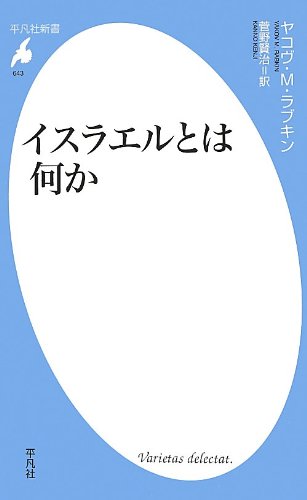- 著者
- 吉川 一義 ヘレナ シロニー 小幡谷 友二 菅野 賢治
- 出版者
- 首都大学東京都市教養学部人文・社会系 東京都立大学人文学部
- 雑誌
- 人文学報. フランス文学 (ISSN:03868729)
- 巻号頁・発行日
- no.377, pp.61-124, 2006-03
7 0 0 0 OA 日本軍政下の上海にユダヤ絶滅計画は存在したか(続) 實吉敏郎・海軍大佐の未公開文書より
- 著者
- 菅野 賢治
- 出版者
- 京都ユダヤ思想学会
- 雑誌
- 京都ユダヤ思想 (ISSN:21862273)
- 巻号頁・発行日
- vol.10, pp.6-35, 2019-06-29 (Released:2022-10-24)
In previous work on this subject, I suggested that the ‘Shibata Affair’ during the summer of 1942 in Shanghai, could have taken place in a completely different way to that described in The Fugu Plan (1979) by Marvin Tokayer and Mary Shwartz and reproduced since then in numerous writings on the Jewish residents in the Far East during the World War II.Shortly after my completing the article (October 2017), a fortuitous coincidence allowed me to discover unpublished documents of the Naval captain Toshiro Saneyoshi (1886-1973), who led the Special Investigation Department in the Naval Attaché's Office in Shanghai from April 1942 to June 1943. His task was nothing less than settling Jewish issues properly in the post-Pearl Habour context. And his diaries, written in Japanese and in English, and the letters to his wife in Tokyo cover the complete range of his Department's activities.Analysis of these newly obtained documents clearly demonstrates that some Shanghai Jewish community leaders seriously tried to abort, not a Josef Meisinger's fictional extermination plan, but a real initiative of forced relocation to a specific area. At the time, Saneyoshi was indeed pursuing this measure along with his two subordinates, Tsutomu Kubota (1895-1975) and Masahiko Sekiya (1904-1994).A critical and multilingual edition of Saneyoshi documents is to be hoped for further in-depth historical research on the relationship between the Shanghai Jewish community and the local Japanese authorities.
5 0 0 0 OA 日本軍政下の上海にユダヤ絶滅計画は存在したか 柴田貢とヨーゼフ・マイジンガーの周辺
- 著者
- 菅野 賢治
- 出版者
- 京都ユダヤ思想学会
- 雑誌
- 京都ユダヤ思想 (ISSN:21862273)
- 巻号頁・発行日
- vol.9, pp.68-90, 2018-06-21 (Released:2022-10-24)
In the exhibition gallery of Sydney Jewish Museum, the images of two Japanese ‘Righteous’ hang next to each other: one is Chiune Sugihara (1900-86) now famous the world over, and the other is Mitsugi Shibata (1910-77) who, in contrast, has remained entirely obscure even to the Japanese public. Much of the literature produced to date on Jewish residents in wartime Shanghai, however, has celebrated Shibata for saving over 20,000 Shanghai Jews from an egregious extermination plan, ostensibly elaborated by S. S. Colonel Josef Meisinger.Far from refuting the humanitarian aspects of Shibata's actions, this article attempts to reconstruct the events in which he was involved in a different way to that of existing works, notably The Fugu Plan (1979) by Marvin Tokayer and Mary Shwartz.Using testimony left by Shibata's widow as well as some diplomatic archives of the Ministry of Foreign Affairs of Japan, the present account will provide a unique insight, from within Japan, into the reality of the ambiguous ‘Shibata Affair’, which took place during the summer of 1942 in Shanghai.
2 0 0 0 OA エリス島からエリス島へ : ペレック・ユダヤ・日本
- 著者
- 菅野 賢治
- 出版者
- 東京都立大学人文学部
- 雑誌
- 人文学報. フランス文学 (ISSN:03868729)
- 巻号頁・発行日
- no.323, pp.69-88, 2001-03
2 0 0 0 IR ヴィクトル・ユゴーと反ユダヤ主義--13世紀ドイツの「儀式殺人」伝説への言及をめぐって
- 著者
- 菅野 賢治
- 出版者
- 東京大学仏語仏文学研究会
- 雑誌
- 仏語仏文学研究 (ISSN:09190473)
- 巻号頁・発行日
- no.42, pp.29-40, 2011
田村毅先生退官記念特集号
1 0 0 0 イスラエルとは何か
- 著者
- ヤコヴ・M・ラブキン著 菅野賢治訳
- 出版者
- 平凡社
- 巻号頁・発行日
- 2012
1 0 0 0 規範から創造へ-レトリック教育とフランス文学
古典修辞学がヨーロッパの知的世界においてはたしてきた役割については、近年わが国においても理解が深まりつつあるが、各種教育機関におけるその実際の教育法や、また修辞学と文学との関わりについては、欧米の研究者間でも未だよく認識されてはいないのが現状である。本研究は、その対象がフランスに限定されてはいるものの、とりわけ実際の学校教育で用いられた修辞学教科書の収集とその分析を通じて、各時代の修辞学教育が提示したディスクールの規範型(パラダイム)の抽出に務め、一定の成果を挙げた。その結果、各時代の修辞的な規範型と実際の作品との対比的な検討によって、フランス文学における文学的創造のひとつのメカニスムを明らかにし得たのである。とりわけ中世ラテン語詩論書にみられるエロ-ジュ・パラドクサルの典拠の探求、および、俗語フランス文学中に見られる各種の風刺的類似例との関係性についての考察、19世紀における中等教育機関での修辞学的教育の数次にわたる改革と複数の文芸思潮との関係を歴史的に考察することに成功するという業績を得ることができた。この結果については、最終報告書の刊行により広く共有できるものとして公開されている。修辞学という広い視点からも、プル-ストと絵画との関係を視覚の修辞学的観点から研究した吉川一義(研究補助者)の大部の論考が同報告書に公表されている。
